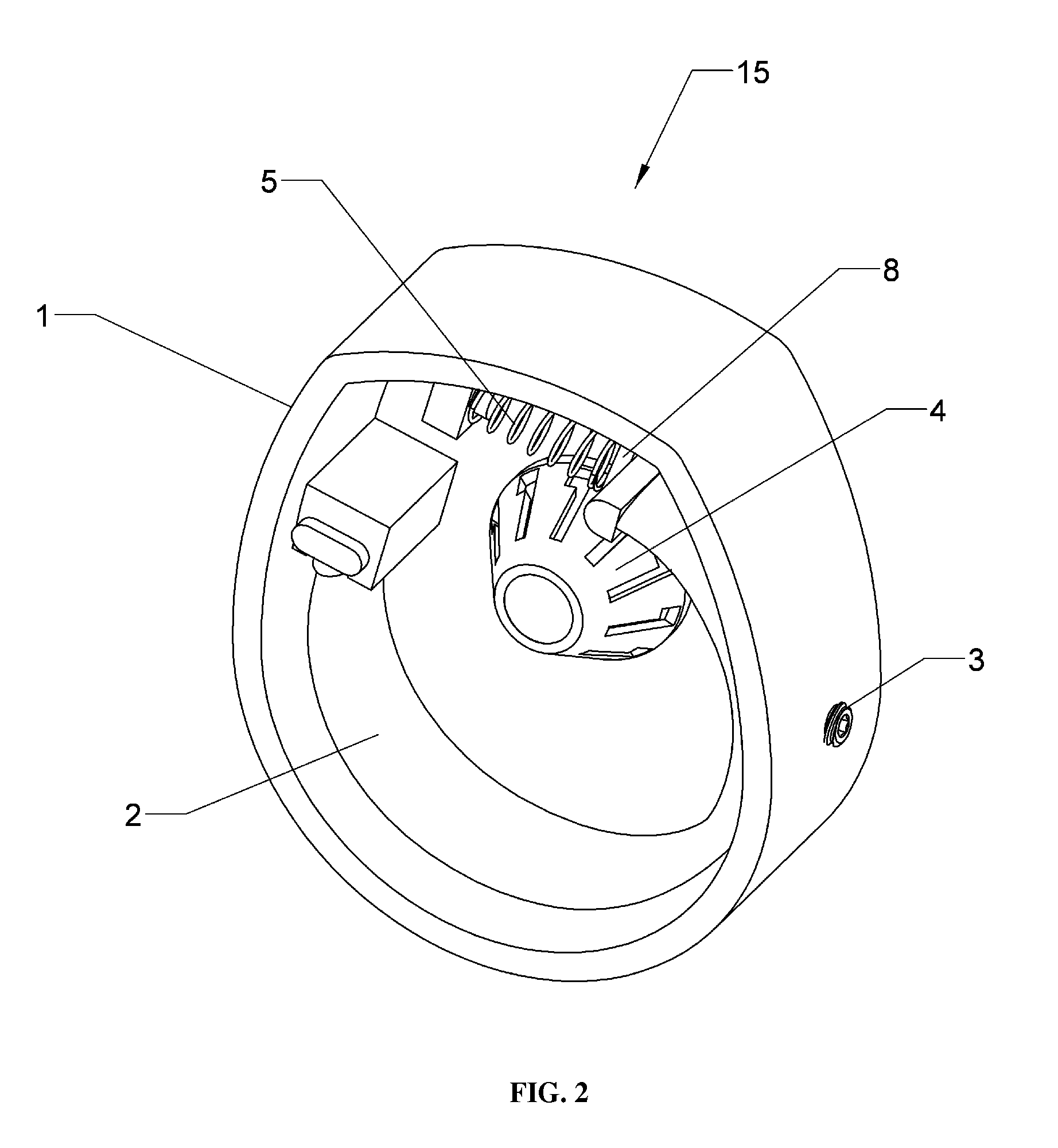Crew Mask Regulator Mechanical Curve Matching Dilution Valve
a technology of dilution valve and screw mask, which is applied in the direction of valve operating means/release devices, process and machine control, instruments, etc., can solve the problems of difficult and impractical design of conventional regulators, inability to accurately dilute oxygen, and inability to work well with old cylindrical aneroid concepts
- Summary
- Abstract
- Description
- Claims
- Application Information
AI Technical Summary
Benefits of technology
Problems solved by technology
Method used
Image
Examples
Embodiment Construction
[0045]A first embodiment of the present invention is now described. FIG. 1 shows the dilution valve assembly 15 integrated with a regulator. The dilution valve 4 controls the amount of ambient air being diluting oxygen at regulator outlet 14. The dilution valve assembly 15, shown in FIG. 2 and FIG. 3, is comprised of a housing 1, Bourdon tube 2, set screws 3, dilution valve 4, and spring 5. Dilution valve 4 is comprised of valve base 6, valve cap 7, and valve arm 8. As shown in FIG. 3 and FIG. 4, valve base 6 is comprised of base outlet 9 and base slots 10 while valve cap 7 contains cap slots 11. Valve cap 7 fits onto valve base 6 and can rotate on valve base 6 causing the cap slots 11 and base slots 10 to either align and allow flow or misalign and block flow through base outlet 9. Valve arm 8 protrudes from valve cap 7 providing a moment arm to operate dilution valve 4. FIG. 5 and FIG. 6 show how Bourdon tube 2 is positioned in housing 1 such that it can flex as atmospheric pressu...
PUM
 Login to View More
Login to View More Abstract
Description
Claims
Application Information
 Login to View More
Login to View More - R&D
- Intellectual Property
- Life Sciences
- Materials
- Tech Scout
- Unparalleled Data Quality
- Higher Quality Content
- 60% Fewer Hallucinations
Browse by: Latest US Patents, China's latest patents, Technical Efficacy Thesaurus, Application Domain, Technology Topic, Popular Technical Reports.
© 2025 PatSnap. All rights reserved.Legal|Privacy policy|Modern Slavery Act Transparency Statement|Sitemap|About US| Contact US: help@patsnap.com



